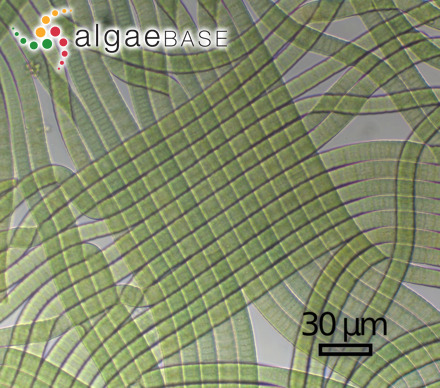Perforafilum tunnellii Zimba, Shalygin & I.-S.Huang 2020

Current name:
Perforafilum tunnellii Zimba, Shalygin & I.-S.Huang
Perforafilun tinnelli - 10 November 2020. Creative Commons
Publication Details
Perforafilum tunnellii Zimba, Shalygin & I.-S.Huang 2020: 14, figs 1-5 (as 'tunnelli')
Published in: Zimba, P.V., Shalygin, S., Huang, I.-S., Momcilovic, M. & Abdulla, H. (2020). A new boring toxin producer – Perforafilum tunnelli gen. & sp. nov. (Oscillatoriales, Cyanobacteria) isolated from Laguna Madre, Texas, USA. Phycologia 60(1): 10-24.
Publication date: "Published online 02 October 2020"
Type Species
This is the type species (holotype) of the genus Perforafilum.
Status of Name
This name is of an entity that is currently accepted taxonomically.
Type Information
Type locality: Yarborough Pass of the hypersaline Laguna Madre, Texas, USA (27°12.62'N, 97°26.35'W); (Zimba & al. 2020: 14) Holotype: 25 May 2018; microbial mat within wind-tidal sand flats; Academy of Natural Sciences of Drexel University, Philadelphia, Pennsylvania, USA (PH); PH00172109 (a dried specimen) (Zimba & al. 2020: 14)
Eponomy
Named in honour of Dr Wes Tunnell, founding Centre Director of the Centre for Coastal Studies, Texas A&M University Corpus Christi, and scholar who focused our attention on the Laguna Madre’s unique algal flora.
General Environment
This is a marine species.
Description
Filaments formed spherical colonies in liquid culture and circular fasicles on the agar surface in late exponential cultures, some with gliding motility. Macrocolonies were organized in the form of circular, nearly concentric fascicles on agar surfaces and had a spherical appearance in liquid, saline media (47 ppt). Growth was not observed below a salinity of 20. Cells were 5.2–10.7 micrometers in diameter, slightly oval in cross section, slightly wider than long (L:W ratio = 0.25–0.70), (1.7) 2.3–3.7 (7) micrometers long, and bright blue-green. Sheaths were thin, colourless, and tightly adherent, with large pores associated with the cell’s junction pores. In TEM cross section, cells appeared slightly ovoid and a sheath was evident. Filaments reached 2.8 cm long
in culture and were granulated in stationary to senescent phases. Thylakoids were wavy in longitudinal section, sometimes irregular, and radially arranged in cross section, appearing on cell periphery. Thylakoids were oriented on the long axis with apical cells containing more folds than intercalary cells. TEM confirmed that thylakoids were arranged peripherally in the longitudinal axis and had a wavy (rarely irregular) appearance. Trichomes were slightly constricted at transverse cell walls, and were clearly visible in the bent portions of filaments and in the actively dividing apical termini. We observed clearly visible pores that occurred mostly at the cross walls on the surface of the sheath. These pores were associated with the junction pores detected by TEM.
Habitat
Microbial mat within wind-tidal sand flats.
Key Characteristics
Morphologically similar to Oxynema, differing by burrowing/boring ability, phylogenetic position, thylakoid arrangement, and 16S rRNA p-distance value.
Similar Species
Oxynema thaianum
Created: 09 November 2020 by Sergei Shalygin.
Last updated: 08 March 2021
Verification of Data
Users are responsible for verifying the accuracy of information before use, as noted on the website Content page.
Usage note
Seven toxins produced (Zimba et al., 2020). - (08 March 2021) - G.M. Guiry
Linking to this page: https://www.algaebase.org/search/species/detail/?species_id=177201
Citing AlgaeBase
Cite this record as:
G.M. Guiry in Guiry, M.D. & Guiry, G.M. 08 March 2021. AlgaeBase. World-wide electronic publication, National University of Ireland, Galway. https://www.algaebase.org; searched on 18 April 2025















